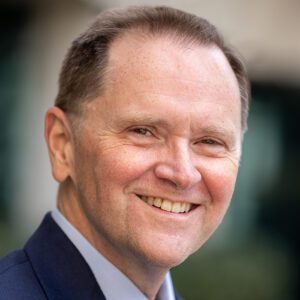Constructing the Future: Why Credential Innovation Needs Bold Leadership
The tagline for Convergence, Credential Innovation in Higher Education, raises two important questions: First, what kind of credentials are we talking about? Is the scope of credentials unlimited, blue sky, or confined to incremental changes on the margins of the status quo? And second, who is leading that innovation, and what do they need to succeed?
Let’s begin with the question about scope. The content at Convergence 2025 primarily focused on non-degree credentials, because most credential innovation is currently happening outside the comfortable boundaries of our traditional degree framework.
We all know the degree remains the gold standard, and in our view that’s a very good thing. After all, it has served American higher education very well for the past hundred or so years and will continue to do so for millions of students.
But I think it’s fair to say we are now in the early days of a movement that inspires us to reimagine what is possible. A movement that invites us to recognize that the degree did not emerge fully formed, transcendent and timeless. No, the degree was very much a human construct.
The first bachelor’s degree was offered by the University of Paris in 1231. To put that in perspective, that was 220 years before Guttenberg invented the printing press. Britain later developed the 4-year model, which it then exported to its colonies. The US may have expelled the British, but we kept their degree framework firmly in place.
In 1906, the Carnegie Foundation added the final structural piece of the standard baccalaureate degree when it began administering retirement pensions for faculty. Carnegie adopted the 120-credit hour model as a standard of measurement for pensions, and institutions quickly fell in line.
The four-year model remained uncontested until the 1990s, when European nations embarked upon the Bologna Process. Named after the host institution, the Bologna Process concluded that the 4-year model no longer served the interests of European society.
The resulting Bologna Declaration was a bold stroke. It standardized a new 3-year model focused on a single discipline of study, more or less eliminated general education requirements, and tasked secondary education with preparing students for their eventual field of study and, ultimately, work.
The Bologna model may or may not work in the US, though a few pioneering institutions are experimenting with it.
My point is that these examples of intervention in history illustrate that what can be constructed can be deconstructed or reconstructed.
So as we talk about the credential innovation occurring on our campuses, let’s keep an eye on the distant horizon of what may be possible in the future.
Let’s take a step back and ask ourselves to imagine a credential architecture that not only advances higher education but civilization itself. Because that’s what is really at stake, especially in this new age of AI.
This brings us to the second question: who leads, or should lead, credential innovation today? We all recognize that faculty are content experts and are thus critical partners. But we must also remember that the online learning revolution didn’t fully mature until senior administrators were charged with building the modern online enterprise and were empowered to lead with an entrepreneurial spirit.
Chief online learning officers, or COLOs, brought leadership and expertise to the emerging field, just as the rise of chief information officers did for the exploding field of IT the decade before.
I believe the field of credential innovation is now at a similar crossroads. I also believe that the promise of credential innovation is too important to be left radically decentralized, under-supported and marginalized, and reliant on the kindness of willing faculty whose academic interests and career incentives sometimes work at cross-purposes with institutional vision and strategy.
No, moments of radical change like we are all experiencing today require great leadership. For this reason, UPCEA is prioritizing the development of senior leaders in credential innovation, just as we successfully championed the rise of the Chief Online Learning Officer over the past decade.
To that end, I’m happy to report that our Council for Credential Innovation held its first meeting at Convergence 2025. Participation in the CCI greatly exceeded our expectations. Expect to hear more good things from this brain trust for the field.

Dr. Robert J. Hansen has served as Chief Executive Officer of UPCEA, the online and professional education association, since 2010. UPCEA has more than tripled in size during Hansen’s tenure by focusing on new initiatives that elevate the field, including industry-leading events for online leadership and credential innovation in higher education, online leadership development programs, and a popular research and consulting service for members. He previously served in senior leadership roles in both public and private universities, and as an education policy aide in the administration of former Illinois governor, Jim Edgar. Hansen earned a Ph.D. in English from the University of Notre Dame, an M.A. in Literature from the University of Michigan, and a B.S. in Psychology from the University of Illinois.
